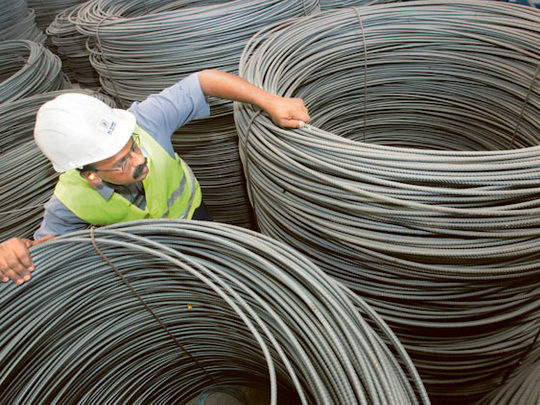
China’s apparent new-found willingness to allow market forces to play a bigger role in its financial arena will ultimately be positive for the commodity sector.
One of the persistent “known unknowns” — to quote former US Defence Secretary Donald Rumsfeld — in China’s commodity space is how much demand has been linked to financing deals, as opposed to actual consumption. This has particularly been the case for copper, with so-called dark copper stocks - those outside the warehousing systems of exchange operators - said to account for as much as 30 per cent of Chinese demand for the industrial metal at varying points in the past few years.
This year the practice of importing commodities and then using them as collateral to access credit is said to have spread to iron ore, with January’s record imports being driven by financing rather than demand for steel-making. This is backed by the rapid rise in inventories of iron ore at Chinese ports, which hit a fresh record high of 106.35 million tonnes in the week to March 14, and are now 42 per cent higher than the low of 2013, reached in mid-April.
The jump in inventories has been accompanied by a sharp fall in the Asian spot price of iron ore, which hit a 2014 low of $104.70 a tonne of March 11, 22 per cent down from the end of last year. While iron ore has recovered somewhat to $110.70 a tonne on March 21, the market is still cautious over the overhang of inventories and muted demand growth for steel.
In copper, the London price fell almost 13 per cent from the end of last year to a closing low of $6,415 a tonne on March 13, with concern over the potential for a rapid sale of copper related to Chinese financing deals weighing on sentiment. While the risk is there that inventories of copper and iron ore will be sold off quickly in order to exit financing deals, the more likely scenario is for a more gradual process.
What is still to become clear is whether the Chinese authorities are determined to stamp out, or at least scale back, the use of commodities as collateral. The first-ever domestic bond default, a missed interest payment from Shanghai Chaori Solar Energy Science and Technology Co this month, has heightened speculation that Beijing will allow heavily indebted companies to go under, rather than always bailing them out.
If this is the case, no doubt there will be losses for creditors, pressure on some bank balance-sheets and a general loss of confidence among investors. It could also be argued that this is a necessary step to ensure the longer-term health of China’s financial, corporate and commodity sectors.
For commodity producers, traders and consumers, it would be a tremendous advantage if the vast majority of China’s purchases were actually for consumption and maintaining a reasonable level of inventories. Removing speculation would tend to reduce volatility and prevent rapid price declines and increases that have roiled markets such as iron ore in recent years.
If Chinese authorities are also willing to allow weaker companies in industries like steel, aluminium, manufacturing and construction go bankrupt, it would provide some of the much-needed consolidation these sectors require.
This isn’t a process without risks, as Beijing would have to withstand anger from investors that lost money and from workers who were fired. It also begs the question as how large a company has to be before it will be saved, what constitutes too big to fail in China?
It’s likely large, state-owned enterprises would be bailed out, but it’s also likely that regional and local governments will be keen to rescue smaller companies that are judged important to that region.
Nonetheless, once processes start they are often difficult to control and manage, and it seems that what is starting in China is a more realistic assessment of the risks associated with credit.
In the current situation, it may take a month or two for the market to work out how much copper and iron ore is likely to be sold out of inventories in China, and this may weigh on prices and import volumes.
But with the seasonal uptick in demand looming as summer approaches, it’s possible that prices for copper and iron ore will stabilise in coming weeks, before starting to trend higher, assuming China’s economic growth target of 7.5 per cent for this year looks like being achieved.












